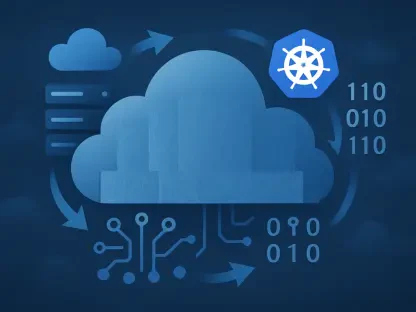In the rapidly evolving landscape of cybersecurity, the emergence of increasingly sophisticated Distributed Denial-of-Service (DDoS) attacks underscores the pressing need for organizations to reevaluate and enhance their security strategies. The European Cyber Report highlights a staggering 137% increase in DDoS attacks compared to the previous year, making it imperative for companies to stay ahead or risk significant financial and reputational damage. With attacks becoming shorter, more targeted, and technically advanced, failure to adapt their defense mechanisms could have dire consequences for businesses.
Alarming Statistics and Trends
The report reveals some startling statistics: the largest attack recorded peaked at 1.4 terabits per second (Tbps), and two-thirds of these attacks reached their apex within ten to sixty seconds. This rapid escalation in attack intensity signals an urgent need for organizations to deploy robust defense mechanisms capable of withstanding such disruptive onslaughts. These multi-vector attacks, which deploy various attack vectors simultaneously, pose significant challenges for traditional defense mechanisms and necessitate more refined, precise protection strategies.
Moreover, a notable incident of a multi-vector attack lasting four days combined Layer 3/4 and Layer 7 techniques, overwhelming infrastructure and web applications alike. Such events highlight how cybercriminals continually innovate their strategies to breach defenses, making it clear that organizational resilience is paramount. As the attack surface increases due to widespread digital transformation, companies must be vigilant in fortifying their IT security frameworks to withstand these increasingly complex threats.
The Evolution of DDoS Attacks
The modern DDoS attack leverages a blend of strategic approaches that transcend traditional attack patterns. These methods include launching massive data streams designed to flood network infrastructure, crippling APIs and web applications by sending complex queries, and employing dynamic attack patterns that are constantly adjusted to defeat defense mechanisms. This evolution indicates that a one-size-fits-all approach to DDoS protection is no longer viable; instead, organizations must adopt adaptive protection strategies.
For instance, the use of powerful botnets and advanced attack techniques has been accelerating the frequency and the impact of DDoS attacks. In specific cases, sophisticated strategies such as zero-day vulnerabilities exploit previously unknown vulnerabilities to wreak havoc on targeted systems, leaving unprepared organizations in a state of crisis. The inherent complexity and rapid adaptation of these attacks demand continuous innovation and enhancement of security strategies to thwart potential breaches effectively.
Adaptive Mitigation Strategies
The vulnerabilities in traditional DDoS defenses underscore the need to shift towards adaptive mitigation strategies. Modern security architectures must incorporate AI-powered real-time threat detection and adaptive protection mechanisms such as Web Application and API protection (WAAP). Such frameworks are crucial in building resilience against sophisticated cyber assaults. Advanced solutions like bot management, adaptive Web Application Firewall (WAF) systems, and AI-based attack detection form a comprehensive security strategy essential for tackling complex DDoS attacks effectively.
Furthermore, continuous monitoring and adaptive systems are crucial components in modern defense strategies. By implementing these advanced protective measures, companies can ensure that they remain a step ahead of emerging threats. A proactive defense stance that integrates these modern strategies can turn the tide against potential attackers and safeguard vital organizational assets from being compromised.
The Necessity of a Holistic Approach
Emphasizing the notion of a holistic approach to cybersecurity, organizations must integrate a multi-layer security strategy. This includes combining traditional prevention measures with advanced, adaptive solutions to build comprehensive resilience against an ever-evolving threat landscape. Regular updates and reviews of security protocols must be carried out to address any potential weaknesses or emerging threat vectors, thereby safeguarding the continuity of business operations.
As cybercriminals continue to refine their tactics, the urgency for robust and comprehensive defense mechanisms cannot be overstressed. Organizations must recognize that proactive investment in adaptive security solutions is pivotal to both their short-term and long-term success. This holistic strategy does not merely mitigate risks but also fortifies an organization’s ability to respond and adapt swiftly to any future threats, thereby ensuring operational resilience.
Moving Forward
In today’s rapidly evolving world of cybersecurity, the rise of increasingly sophisticated Distributed Denial-of-Service (DDoS) attacks highlights the urgent need for organizations to reassess and upgrade their security measures. According to the European Cyber Report, DDoS attacks have surged by an alarming 137% compared to the previous year. This dramatic increase underscores the importance for companies to stay vigilant and proactive in their defense strategies to avoid severe financial losses and reputational harm. Modern DDoS attacks are not only more frequent but also shorter in duration, highly targeted, and technically advanced. As these cyber threats continue to evolve, businesses that fail to adapt their defense mechanisms could face serious consequences. Therefore, it is crucial for organizations to implement robust cybersecurity strategies to safeguard their assets and maintain their trust among stakeholders. In a landscape where cyber threats are constantly changing, staying ahead of potential attackers is not just advisable—it’s essential for survival.









